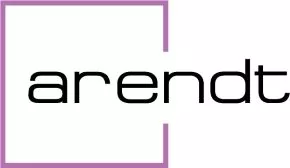On 9 June 2023, the Luxembourg tax authorities issued a Circular on reverse hybrids within the meaning of article 168quater of the income tax law ("ITL"). It is accompanied by an FAQ on new tax form 205, the tax return to be filed by reverse hybrids.
The Circular is very welcome as it provides valuable information about which provisions of the ITL do or do not apply to reverse hybrids, generally in line with our initial expectations. The FAQ contains general information about how to complete and file the new tax form 205.
Article 168quater ITL implemented the reverse hybrid rule foreseen by Council Directive (EU) 2017/952 of 29 May 2017 ("ATAD II") into domestic law. Briefly, with effect from tax year 2022, a Luxembourg tax transparent entity (e.g. société en commandite simple ("SCS") or société en commandite spéciale ("SCSp")), unless benefiting from the collective investment vehicle exemption, may be regarded as a Luxembourg resident taxpayer whose net taxable income is subject to corporate income tax ("CIT") on the portion of its net taxable income that is not otherwise taxed in Luxembourg or in any other jurisdiction, if one or more non-resident associated enterprises, holding in aggregate a direct or indirect interest of 50% or more of the voting rights, capital interests or rights to a share of profit, are located in a jurisdiction that regard the Luxembourg entity as a taxable (opaque) person in Luxembourg and do not tax the net income attributable to such associated enterprises because of that difference in characterisation.
More information on this topic here: 2023 budget law amendment_, Law implementing ATAD II_ and Bill of law implementing ATAD II_
Main clarifications provided by the Circular
Tax status of the reverse hybrid
According to the Circular, a reverse hybrid is not a Luxembourg resident collective entity within the meaning of article 159 ITL. Therefore, only the specific provisions of the ITL expressly indicated in the Circular apply. In this respect, the Circular indicates that the following provisions of the ITL are not applicable to a reverse hybrid: article 164ter (controlled foreign companies provisions); article 166 (Luxembourg participation exemption regime on dividends and liquidation proceeds, and a fortiori on capital gains); article 168bis (interest deduction limitation rules) and article 168ter (anti-hybrid rules).
Determination of total net income subject to tax at the level of
the reverse hybrid
- The net income that may be subject to CIT
includes the last three categories of income listed in article 10
ITL, i.e. net income from capital and investments (revenu net
provenant de capitaux mobiliers) within the meaning of article
97 ITL, net income from rentals and leases (revenu net
provenant de la location de biens) within the meaning of
article 98 ITL, and various net income specified in article 99 ITL
(revenu net divers).
- The taxable basis is to be determined based on the net income
realised by the reverse hybrid during the calendar
year (i.e. from 1 January to 31 December), irrespective of
the reverse hybrid's accounting year.
- The conversion of income and expenses
denominated in foreign currency into EUR is to be
made, in principle, at the exchange rate of the day on which (i)
the income is received by the reverse hybrid entity or (ii) the
expense is incurred by the reverse hybrid entity. However,
according to an administrative permission (tolérance
administrative) provided for by the Circular, all income
received and all expenses incurred by a reverse hybrid entity in a
given calendar year may be converted into EUR using the same
exchange rate, being either the exchange rate at 31 December or the
average exchange rate of the given calendar year.
- The step-up mechanism provided for by article
102 § 4a ITL does not apply at the time the entity becomes a
reverse hybrid. This means that the historic acquisition price of a
given asset (and not the fair market value of the asset at the time
the Luxembourg tax transparent entity becomes a reverse hybrid
entity) should be used when calculating the gain (or loss) upon
transfer of that asset by the reverse hybrid.
- The fact that the entity ceases to be considered a reverse
hybrid has no Luxembourg tax consequences (no gain is deemed
realised at that time).
- Distributions of income by a reverse hybrid to
its partners are not subject to Luxembourg withholding tax
("WHT").
- Dividends received by a reverse hybrid may benefit from the
50% CIT exemption provided for by article 115 (15a)
ITL, provided the conditions set out in that article are
met.
- When the total net income of the reverse hybrid includes net income from capital and investments (revenu net provenant de capitaux mobiliers) within the meaning of article 97 ITL, Luxembourg or foreign WHT may be credited against CIT payable by the reverse hybrid entity, in proportion to the share of the net income subject to CIT at the level of the reverse hybrid entity.
Main clarifications provided by the FAQ
- A new form 205 must be filed as from tax year 2022 by all
transparent entities that have been formally contacted by the tax
authorities, even if those entities have not realised any net
income (that may be subject to CIT). Form 205 must also be filed by
transparent entities that have not been formally contacted where
the conditions for applying article 168quater ITL are
met.
- The first part of form 205 includes the total net income (by
categories) of the transparent entity which is subject to tax in
Luxembourg. The second part includes any net income by categories
(even if not subject to tax in Luxembourg by application i.a. of a
tax treaty) falling within the scope of article 168quater
- Form 205 must include information about non-resident associated
enterprises whose share of net income is subject to CIT in
accordance with 168quater ITL.
- The Luxembourg tax authorities may request any relevant
information in order to verify the correct and proper application
of article 168quater In that context, a list of all the
co-owners of the transparent entity must be attached to tax form
205, with an indication of the percentage of participation and the
amount of income allocated to each co-owner by application of the
relevant accounting rules.
- Where an interest in the reverse hybrid (the "First Transparent Entity") is held by another tax transparent entity (the "Second Transparent Entity"), the Second Transparent Entity should not be indicated as a co-owner of the First Transparent Entity. Instead, the co-owners of the Second Transparent Entity should be indicated, in proportion to the interest held through the Second Transparent Entity (adopting a look-through approach).
The content of this article is intended to provide a general guide to the subject matter. Specialist advice should be sought about your specific circumstances.




